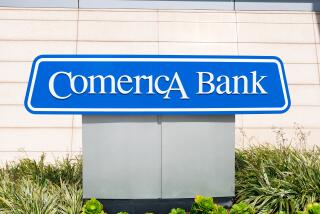Fed Adopts Rules to Speed Up Bank Closures : Banking: AT least 50 financially shaky banks could be closed in early 1993 as a result of the new regulations.
- Share via
WASHINGTON — In a milestone for the banking industry, the Federal Reserve on Monday adopted tough new rules that speed up the process it takes to shut down critically weak banks.
Under the new rules, regulators can close banks if they have less than 2% capital and have failed to improve their financial condition within 90 days. The rules, which take effect in December, could be the death knell in early 1993 for at least 50 shaky banks with $21 billion in assets, banking officials said.
Other federal bank and thrift regulatory agencies are expected to adopt the same rules shortly.
“It is one of the most far-reaching steps the U.S. banking system has seen,” said Fed Gov. Wayne Angell in voting for the rules.
Until now, regulators had to wait until a bank or thrift had depleted all of its capital before they could close an institution.
This prevented regulators from closing seriously troubled banks and thrifts that gambled in high-stakes finance to stay alive and that used accounting gimmicks to remain solvent.
During the 1980s, these tactics led to the failure of 1,000 thrifts, forcing a government rescue of the industry at a taxpayers’ cost of more than $500 billion over the next 40 years.
Another 1,000 banks have failed in the last six years, bankrupting the privately financed deposit insurance fund, which now is staying alive with a $70-billion taxpayer-financed government loan.
Anxious to prevent a repeat of the thrift disaster, Congress last year passed a bank act requiring regulators to use capital as an early warning system to detect weak banks.
Although only a small segment of the $4-trillion asset industry faces imminent closure, the new rules affect all 12,115 of the nation’s commercial banks by setting tough new standards for evaluating their financial safety.
The rules set five categories for measuring whether a bank has enough capital. Only the strongest banks, those with at least 8% risk-adjusted capital as a percentage of assets, would be free of regulatory actions.
As a bank’s capital slips below 8%, management faces increasingly tough restrictions.
This starts with limits on asset growth when capital is between 6% and 8%, escalating to replacement of top officers and directors.
More to Read
Inside the business of entertainment
The Wide Shot brings you news, analysis and insights on everything from streaming wars to production — and what it all means for the future.
You may occasionally receive promotional content from the Los Angeles Times.










